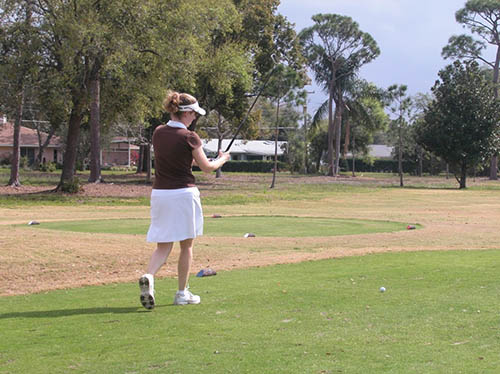Control Your Fear by Not Being Afraid

By Dr. T. J. Tomasi, Keiser University College of Golf Senior Faculty and Director of Research
To paraphrase Gordon Gekko in the movie “Wall Street,” let me say that “fear is good.” This is not to say, however, that “being afraid” is good. The two are very different in that fear is the mother of all focus — the trigger to action — while being afraid can be paralyzing — you can’t think, plan, or execute, so nothing you do is crafted to the exigencies of the situation. Fear is inherent in the situation – being afraid is your emotion after you recognize the situation.
Fear is clarity, while being afraid muddles your understanding. Fear is a trigger state that cues you up for action and problem solving, but when you’re afraid, your responses revert to prehistoric, prototype patterns that work only at the most rudimentary level. This is your snake brain at work, and when was the last time you needed to outwit a snake?
To stop fear from spreading into being afraid, you can train yourself to recognize a threat and select the proper strategy/tactics to deal with it. To do this, you must focus on the situation, gather and vet information, decide on your plan to meet the threat, and execute it. In golf, this is crystalized in the role of the pre-shot routine.
Golf Threats
Golf presents threats euphemistically called “challenges.” Not only do course designers want you thinking about what dangers lurk on the course, but they also want you to internalize the threats, i.e., to be afraid. So, they create a threatening array of bunkers, mounds, water, humpback greens, and railway ties whose object is to strip you of your capacity to react correctly. As Robert Trent Jones Jr. said, “Some tees are positioned to … create a certain intimidation factor for the golfer.” And from Pete Dye: “When I get the boys thinking, I got ’em.”
Great players do not see the course as an unsafe place — they have fear by virtue of the challenge, but they are not afraid. Part of their training is the “small-begets-big” protocol outlined below.
Small-Begets-Big Protocol
How a series of small (mini) goals can sum to reach your big goal.
1. Keep stats on all your shots for 10 rounds to find out which ones trouble you the most — aka, which ones are you afraid of? The chip from a tight lie or a dogleg left drive?
2. Choose one and devise a plan to make that shot a strength. Your intervention may involve a lesson with the pro, a change of technique, a change of attitude, or just more practice — but it is focused only on the shot you have chosen.
3. Next, break your intervention into mini-goals. Former Navy SEAL Marcus Luttrell of “Lone Survivor” fame said that he made it through the intensive SEAL training school designed to weed out quitters by making a mini goal to last until lunch each day – then until dinner-then until bedtime. Though the big goal was to become a SEAL, the mini goal was to make it to lunch, etc. To wit: Problem solve your big goal one mile or hour or segment at a time — and pick a time frame for your plan.
The takeaway: Devise a routine with sequential mini-goals that get you to the big goal using time frames that insulate you, not from fear but from being afraid.

This player, a student of mine who was an All-American in college golf and later turned pro, told herself during her pre-shot routine that she was ‘a tiger.’ It was her way of stopping fear from making her afraid. She made sure she ‘stalked the target’ on every shot.
If you’d like to study with Dr. Tomasi and other PGA Master Professionals, contact The College of Golf today.














